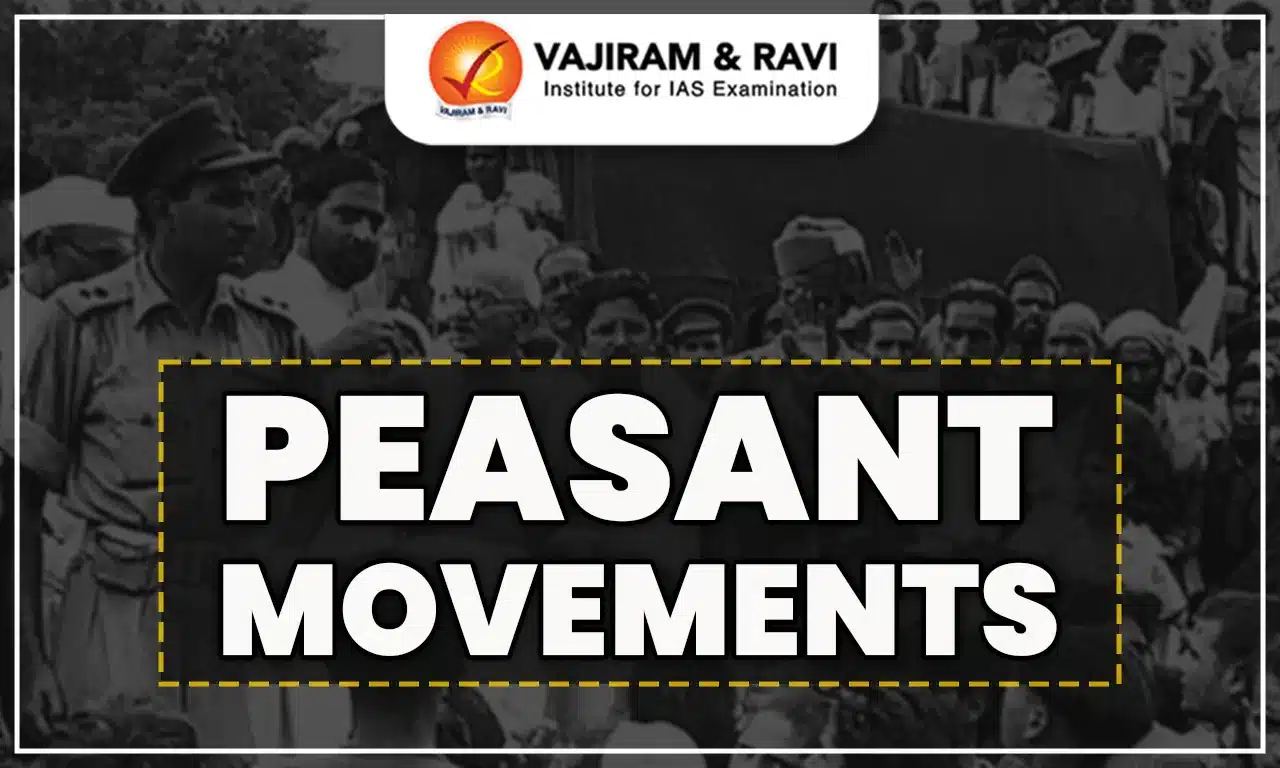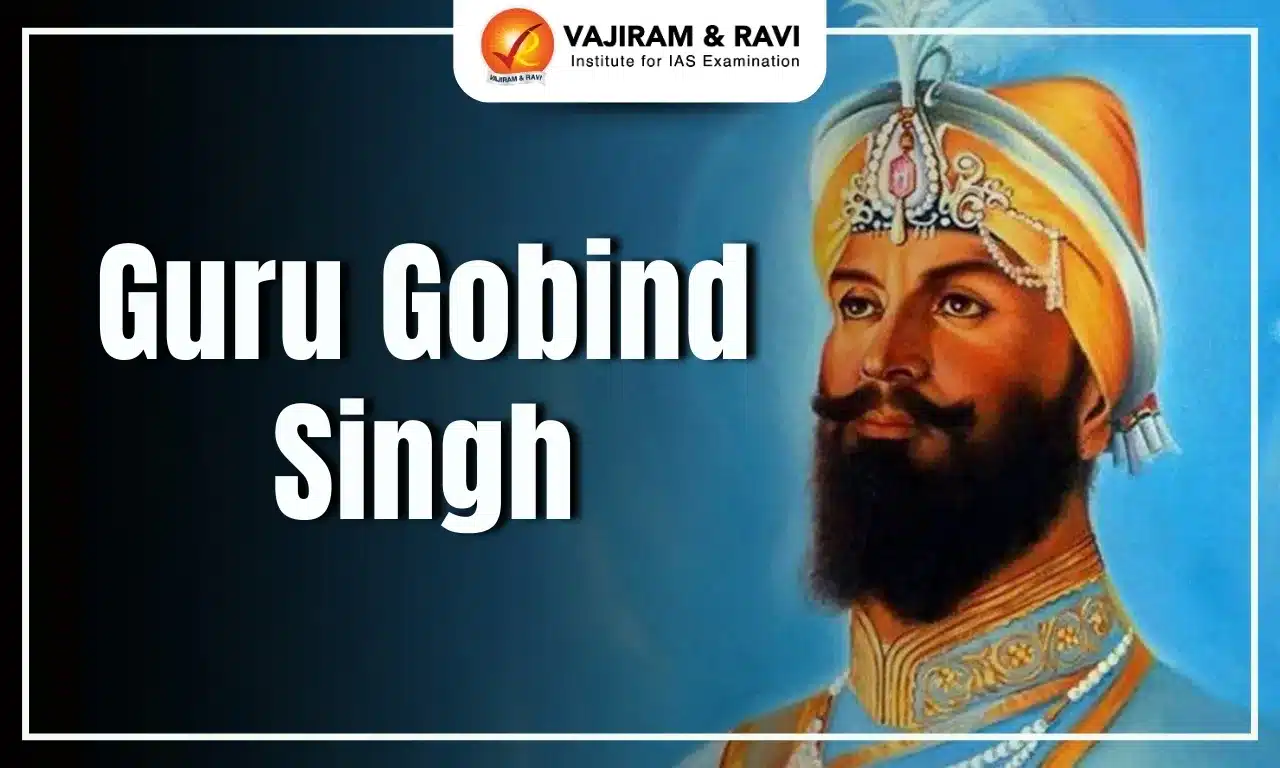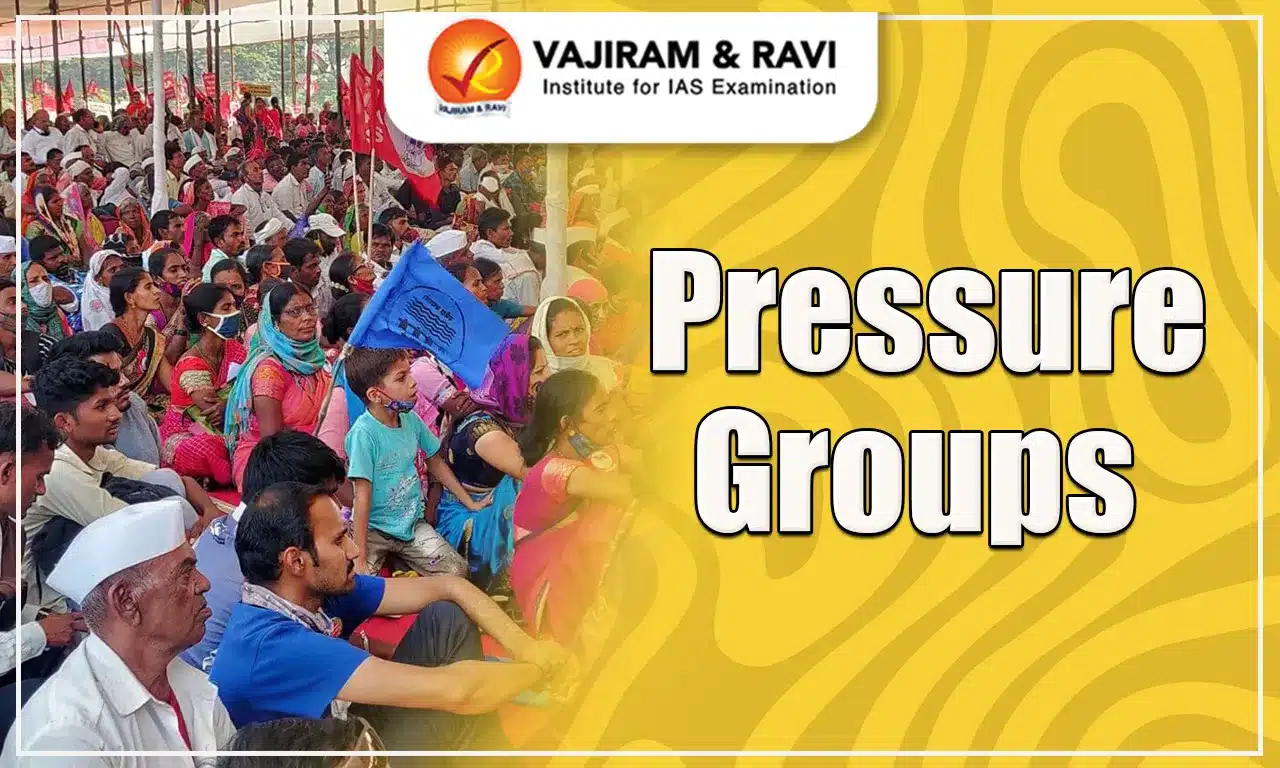The peasants were the worst sufferers in colonial India. Peasant movements were a result of the aggressive British economic policies based on mercantilism. This policy caused the commercialisation of agriculture, which altered the mode of production and disrupted traditional agrarian relationships in India. Various land revenue settlements that made the land a tradable entity, as well as deforestation for cash crops, were the causes of peasant movements that were both social unrest against landlords and money lenders and civil unrest against the British.
Farmers, tribal people, and even small landlords made up almost the entire population of British India who participated in this unrest. The peasant movements didn't have a strong organisation at first, but as they integrated into the freedom movement, many political parties took charge of them and helped them gain popularity.
Peasant Movements in India Factors
The central factor of the peasant movements in India was the British economic policy and its consequences. These factors are described here:
- Stagnization of agriculture: The colonial period's changes to the agrarian structure led to the impoverishment of the Indian peasantry due to:
- Colonial economic policies,
- Ruin of the handicrafts resulting in overcrowding of land,
- The new land revenue system,
- The colonial administrative and judicial system.
- Land revenue settlements and their effects: Three land revenue systems were introduced in various parts of India to improve the regularity of land revenue collection: Zamindari, Ryotwari, and Mahalwari.
- In all of this, the revenue demand in permanently settled areas was set at a very high level, which led the zamindars to demand even more money from the tenants.
- In Ryotwari areas, there was a provision for periodic revision which resulted in an increase in rent every few years.
- Commercialization of agriculture: The late nineteenth century saw the development of commercialised agriculture, and the land became a marketable commodity.
- Indebtedness: High burden of taxes and strict collection in time, without remission even in times of adversity, forced the peasants to borrow from moneylenders. Over time, this indebtedness resulted in the increasing loss of peasants’ control of the land.
- High-Interest Rate of Zamindars: The overburdened farmer approached the local moneylender, who exploited them by extracting high rates of interest on the money lent.
- The actual cultivators were gradually demoted to the status of tenants-at-will, sharecroppers, and landless labourers.
- Famines: As a result of the periodic recurrence of famines and the economic depression that occurred in the final decades of the 19th century, the situation in rural areas became even worse, resulting in many peasant uprisings.
- Reduction in Production: Decline in agricultural productivity, stagnation in agrarian output, decrease in per capita availability of food.
Peasant Movements in India Phases
On the basis of the period, the peasant movements in India can broadly be grouped into two distinct phases:
- First Phase: Peasant movements before 1857
- Second Phase: Peasant movements after 1857
First Phase of Peasant Movements Before 1857
- Nature of Peasant Revolts before 1857:
- Historians sympathetic to the British and the established order often saw these uprisings as a problem of law and order.
- The Nationalists tended to appropriate the peasant tribal history to the purposes of the anti-colonial struggle ignoring certain other facets of the oppressed people's struggle.
- Leadership: The leadership of these movements often devolved upon men or women who were within the cultural world of the peasants they led. They were able to express the oppressed's protests.
Second Phase of Peasant Movements After 1857
- Peasants emerged as the primary force in agrarian movements, fighting for their own demands directly.
- The struggles were aimed at achieving specific and limited goals and resolving specific grievances.
- The demands were almost entirely focused on economic issues.
- The movements were aimed at the peasant's immediate enemies: foreign planters, indigenous zamindars, and moneylenders.
- The peasant movement completely shifted its course in the 20th century when national parties like the Indian National Congress and the Communist Party of India took up their issues and supported their efforts. Now the peasants’ issues were part of broader national interests.
- Prominent leaders such as Mahatma Gandhi, Sardar Patel, the Socialist faction of Congress and communists played an essential role in this direction.
Peasant Movements in India Before 1857
During this period, the main reason for a series of spontaneous peasant uprisings in different parts of the country was the high-handedness of zamindars or landlords, along with the excessive rates of land revenue.
| Name of the Peasant Revolt | Description |
| Sanyasi Revolt |
-Year: 1763-1800 -Area: Bengal -Maznoom Shah was one of their prominent leaders. -Supported by: Bhawani Pathak and a woman, Devi Choudhurani. -Immediate cause: The British imposed restrictions on pilgrims visiting the holy places of both Hindus and Muslims. -The Bengal famine of 1770 sparked a rebellion among landless peasants, displaced zamindars, disbanded soldiers, and the poor. -The Sanyasis and Fakirs joined them. -The Faqirs were a group of wandering Muslim religious mendicants in Bengal. -Nature of the revolt: They attacked English factories and seized their goods, cash, arms, and ammunition. -Book: Bankim Chandra Chattopadhyay's semi-historical novel Anandmath is based on the Sanyasi revolt. -It was a united revolt of Hindu and Muslim monks against the British led by Warren Hastings. |
| Narkelberia Uprising |
-Year: 1782-1831 -Area: West Bengal -Leader: Mir Nithar Ali (Titu Mir) -Reason for the revolt: Muslim tenants fought back against landlords, who imposed a beard tax on Faraizis and British Indigo planters. -Nature of the revolt: Armed revolt |
| Pagal Panthis |
-Year:1825-1833 -It is a peasant movement guided by religious mendicants called Pagal Panthis. -Area: Bengal -Leader: Karam Shah and Tipu Shah -Reason for the revolt: The Pagals and their associates fought against the zamindars and the forces of the company to protect the peasants from the oppressions and undue claims of the zamindars. -British Reaction: Tipu Shah and some of his insurgent followers were captured in 1833 and tried.
|
Peasant Movements in India After 1857
After 1857, there was increasing involvement of middle-class, modern educated persons in peasant resistance movements. As the idea of nationalism gripped the persons educated in the modern system, these ideas, in some form or the other, were carried to the peasantry also.
| Name of the revolt | Description |
| Indigo Revolt |
-Year: 1859-60 -Area: Bengal -Leader: Biswas brothers (Bishnucaharan Biswas and Digambar Biswas) of Nadia, Rafique Mondal of Malda and Kader Molla of Pabna. -Reason for the revolt: The peasants in many parts of Bengal had refused to plant indigo for the European planters who had been forcing the peasants to cultivate it. The Bengali intellectuals brought this issue to the notice of the Indian public. -Nature of the revolt: The peasants attacked indigo factories with spears and swords.
-British Reaction: The Government appointed the Indigo Commission in 1869, which worked for the removal of some of the abuses of indigo cultivation. -The play Neel Darpan by Dinabandhu Mitra in 1860 depicted planters’ oppression and peasants’ protests. |
| Deccan Riots |
-Year: 1875 -Area: Poona, Satara and Ahmednagar -Reason for the revolt: The basis of the Deccan Riots lay in the evolution of the ryotwari system itself. By favouring the Vanis (village moneylenders) over the Kunbis (cultivator caste), the courts and new laws polarised caste differences.
-Nature of the revolt: The peasantry, which had gathered for the weekly bazaar, launched attacks on the moneylenders and destroyed the debt contracts and bonds. -British Response: After suppressing the revolt, the Government passed the Deccan Agriculturists Relief Act in 1879 to extend protection to them against the moneylenders. |
| Pabna Movement |
-Year: 1873-1885 -Area: Pabna, Bengal -Leader: Ishan Chandra Roy, Shambhu Nath Pal, Khodi Mulla. -Reason for the revolt: The peasants organised a no-rent union and launched armed attacks on the zamindars and their agents because of illegal seizure of property, arbitrary enhancement of rent and use of force, frequent recourses to ejection and harassment,
-Agrarian League (1873), organised by peasants of Yusufshahi Pargana of Pabna, which raised funds to mitigate litigation expenses, held mass meetings. -British Reaction: This peasant movement was suppressed only after armed intervention by the government. Later an enquiry committee was appointed to look into the complaints of the peasants, which led to the enactment of an act. |
| Champaran Movement |
-Year: 1917-1918 -Area: Champaran, Bihar -Leader: Mahatma Gandhi, assisted by J.B. Kripalani, Babu Brajkishore Prasad and Babu Rajendra Prasad. -Reason for the revolt: The tenant farmers were forced by the British planters to cultivate indigo in the three-twentieth part of a bigha of their holding; this was known as the 'Teen Kathia' system.
-Nature of the revolt: Gandhiji’s method of peaceful satyagraha and civil disobedience. -British Reaction: The government had to relent and called Gandhiji for talks and also made him a member of the committee to enquire into the plight of the indigo peasants.
|
| Kheda Satyagraha |
-Year: 1918 -Area: Kheda, Gujarat -Leader: Mahatma Gandhi -Reason for the revolt: The immediate backdrop to the agitation was a poor harvest in 1917-18, which coincided with an increase in the price of essentials.
-Nature of the revolt: Reports of violence in some areas disobeying Gandhi’s appeal to passive resistance. -British Reaction: Mohanlal Kameshwar Pandya and other local leaders were arrested for defying the government.
|
| Eka Movement |
-Year: 1921 -Area: Awadh, Uttar Pradesh -Leader: Madari Pasi
-Reason for the revolt: Spanish flu, six years of drought, price rise and a shortage of food, grains and fuel.
-Nature of the revolt: Because of the involvement of Congress and Khilafat campaigners, the movement was initially largely peaceful and worked within the framework of Gandhian ideology.
|
| Mappila Revolt |
-Year: 1921 -Area: Malabar region, Kerala -Reason for the revolt:Nambudiri Brahmins landlords exploited the Mappila tenants. This rebellion had started as an anti-government, anti-landlord affair but acquired communal colours.
-In Manjeri in 1920, the Malabar District Congress Committee supported the tenants' cause and demanded legislation to regulate landlord-tenant relations. -Nature of the revolt: The uprising reportedly led to the death of around 10,000 people. Many Hindus were forced to convert to Islam.
-British Reaction: The uprising lasted several months, forcing British authorities to impose martial law to put an end to it. They also established a new police unit called Malabar Special Police to put down the rebellion. |
| Bardoli Satyagraha |
-Year: 1928 -Area: Gujarat -Leader: Vallabhbhai Patel -Reason for the revolt: Against the tax hike of 22% by the Bombay Presidency in the backdrop of famine and flood. -Demands of the Peasants: Either the government appoint an independent tribunal for a fresh assessment, or it must accept the previous amount as the full payment. -Methods used for mobilising the masses:Bardoli Satyagraha Patrika was a daily newspaper published during the satyagraha.
-British Reaction: Under the pressure of the Satyagrahis, the government had begun to run out of steam by June 1928. A settlement with the farmers was mediated by Chunnilal Mehta, a key member of the Governor's Council.
|
| All India Kisan Sabha |
-Year:1936 -Formed at Indian National Congress (INC) Lucknow Session -Founder: Swami Sahajananda Saraswati -Formation of All India Kisan Sabha: In Bihar, Swami Sahajanand started a movement to protect the occupancy rights of the tenants, and formed Bihar Provincial Kisan Sabha in 1929.
-Manifesto: It issued the Kisan manifesto, which called for the abolition of zamindari and occupancy rights for all tenants. -After the Elections of 1937: The Congress ministries undertook certain measures to:
|
| Tebhaga Movement |
-Year: 1946–47 -Area: Bengal -Organised by: Communist cadres of the Bengal Provincial Krishak Sabha. -Demand: It was the sharecroppers' movement that demanded two-thirds of the land's produce for themselves and one-third for landlords.
-Outcomes: Approximately 40% of sharecropping peasants obtained tebhaga rights willingly granted by landholders, repeal or reduction of unjust and illegal exaction. However, the movement's success in East Bengal districts was limited. |
| Telangana Movement |
-Year: 1946-1952 -Area: Andhra Pradesh - Against Oppressive landlordism perpetrated by local landlords (jagirdars and Deshmukh, locally known as Dora), which Nizam patronised. - Reasons: Peasants were forced to pay high taxes due to unhealthy economic policies of Nizam rule, and in non-payments of the taxes, they were subjected to forced labour (Vetti) and even forced to be evicted from their land. - Nature of the Revolt:
- British Reaction: Vetti was abolished, lands were distributed, debts were settled, etc. |
| Other Related Posts | |
| Indigo Revolt | Peasant Movements in India |
| Pabna Revolt | Eka Movement |
| Deccan Riots | Bardoli Satyagraha |
| All India Kisan Sabha | Tebhaga Movement |
| Telangana Movement | |
Last updated on December, 2025
→ Check out the latest UPSC Syllabus 2026 here.
→ Join Vajiram & Ravi’s Interview Guidance Programme for expert help to crack your final UPSC stage.
→ UPSC Mains Result 2025 is now out.
→ UPSC Notification 2026 is scheduled to be released on January 14, 2026.
→ UPSC Calendar 2026 is released on 15th May, 2025.
→ UPSC Prelims 2026 will be conducted on 24th May, 2026 & UPSC Mains 2026 will be conducted on 21st August 2026.
→ The UPSC Selection Process is of 3 stages-Prelims, Mains and Interview.
→ UPSC Result 2024 is released with latest UPSC Marksheet 2024. Check Now!
→ UPSC Toppers List 2024 is released now. Shakti Dubey is UPSC AIR 1 2024 Topper.
→ Also check Best IAS Coaching in Delhi
Peasant Movement in India FAQs
Q1. Which was the first Peasant Movement in India by Gandhi?+
Q2. Why did Peasant Movements start during British rule?+
Q3. When did the first Peasant Movement start in India?+
Q4. Why were some peasant revolts before 1857 called “Restorative Rebellion"?+
Q5. Who introduced the Ryotwari System?Q) Who introduced the Ryotwari System?+

















